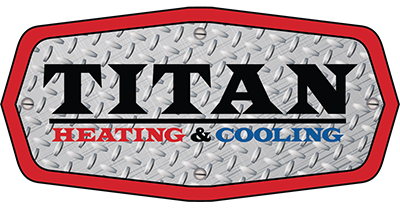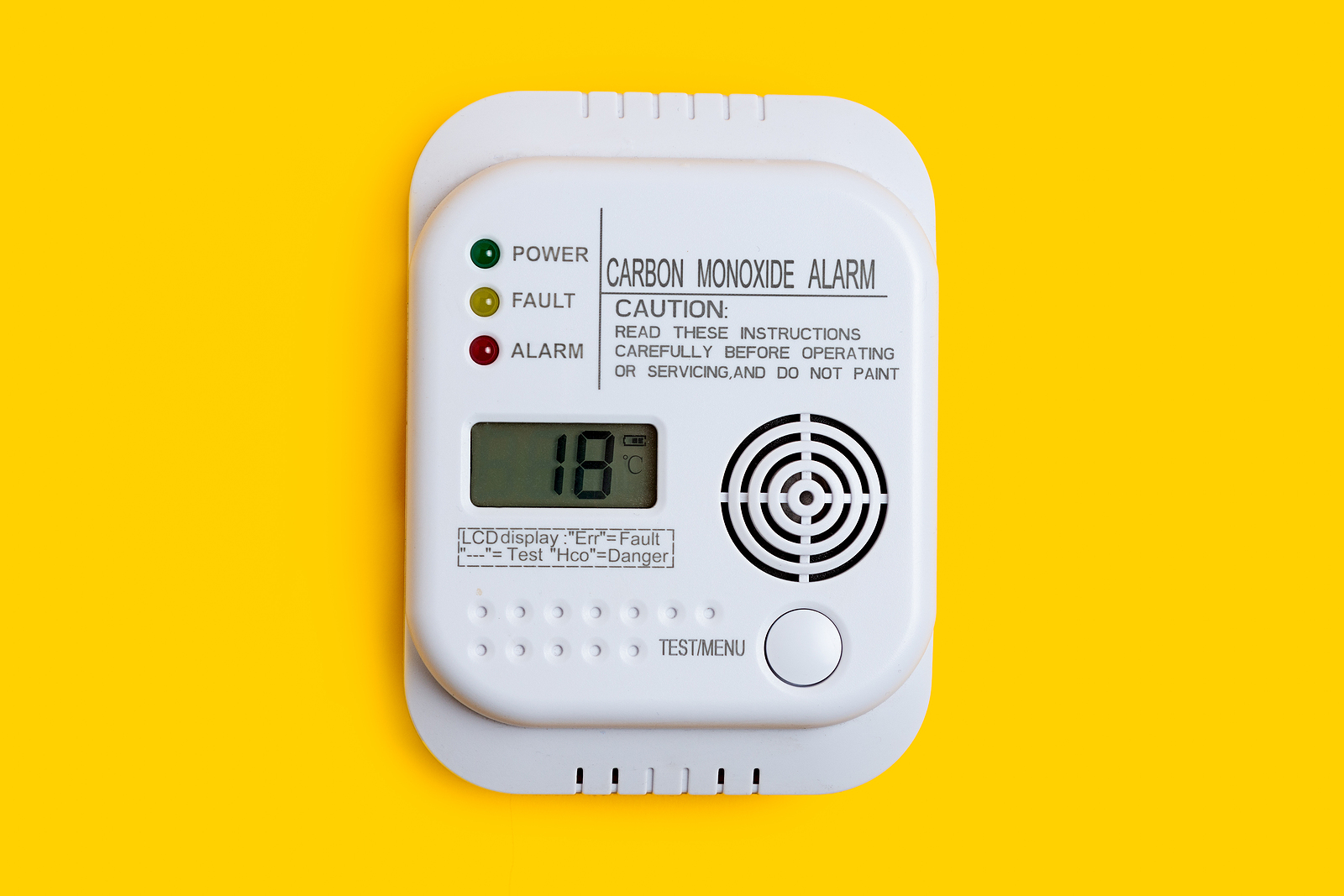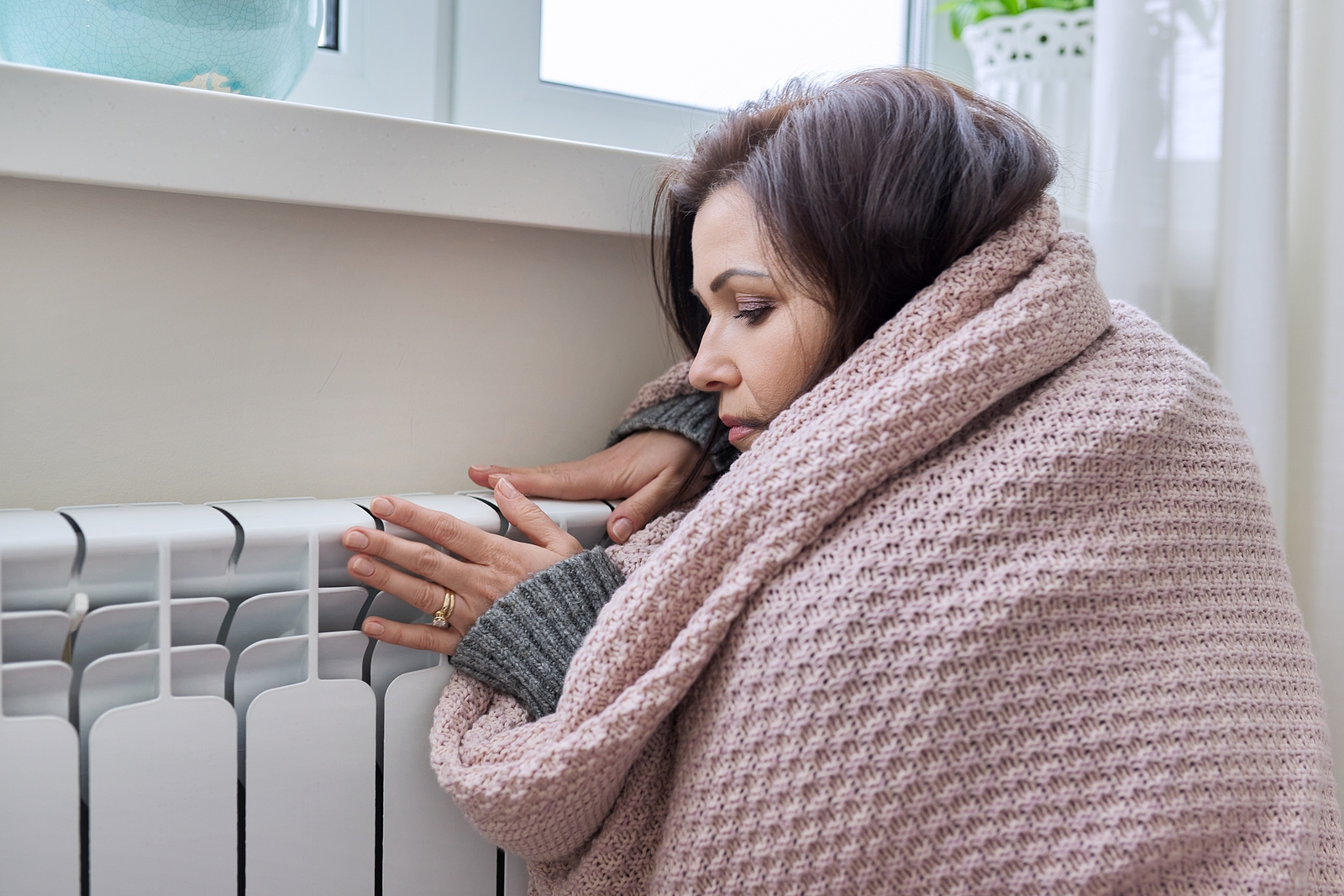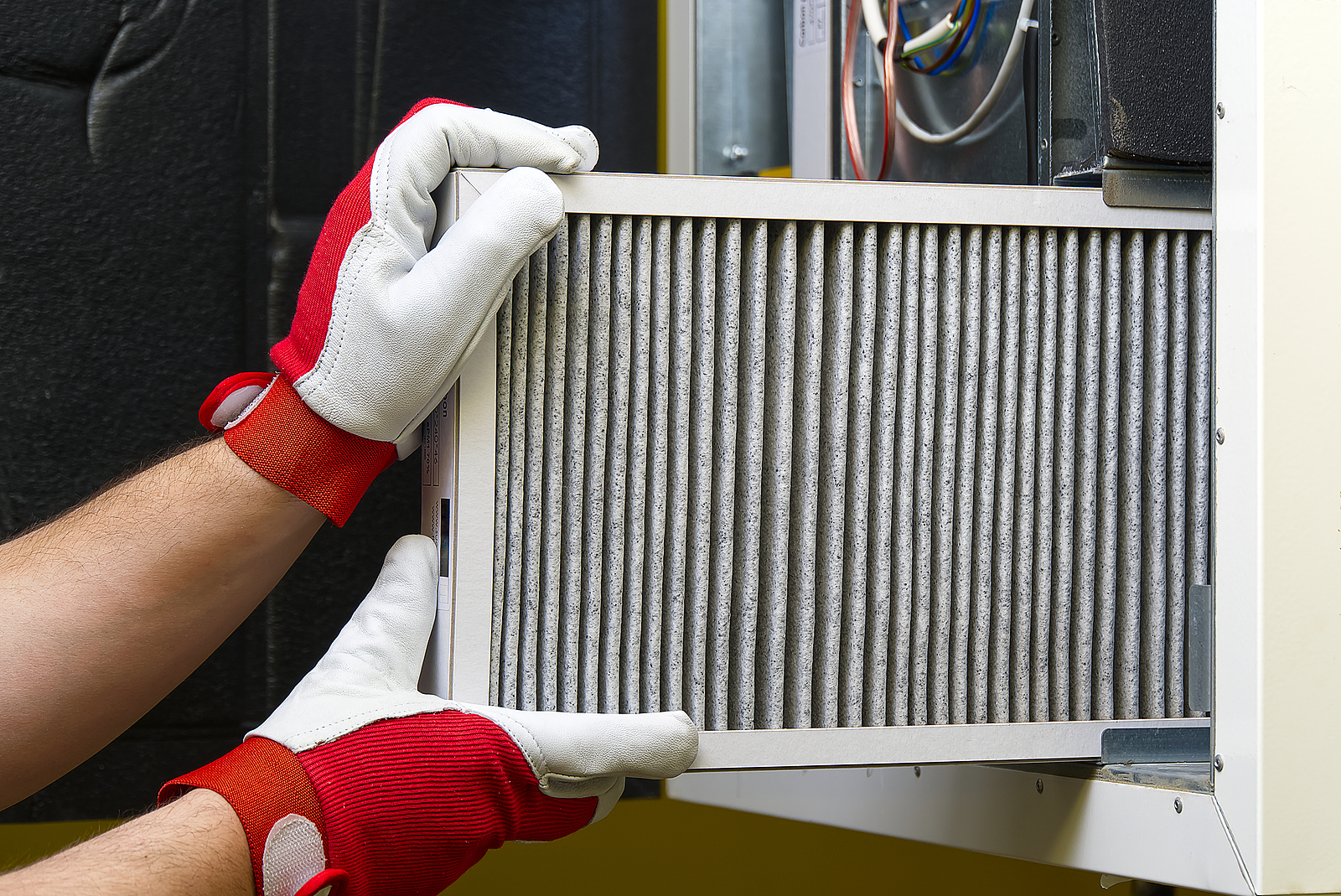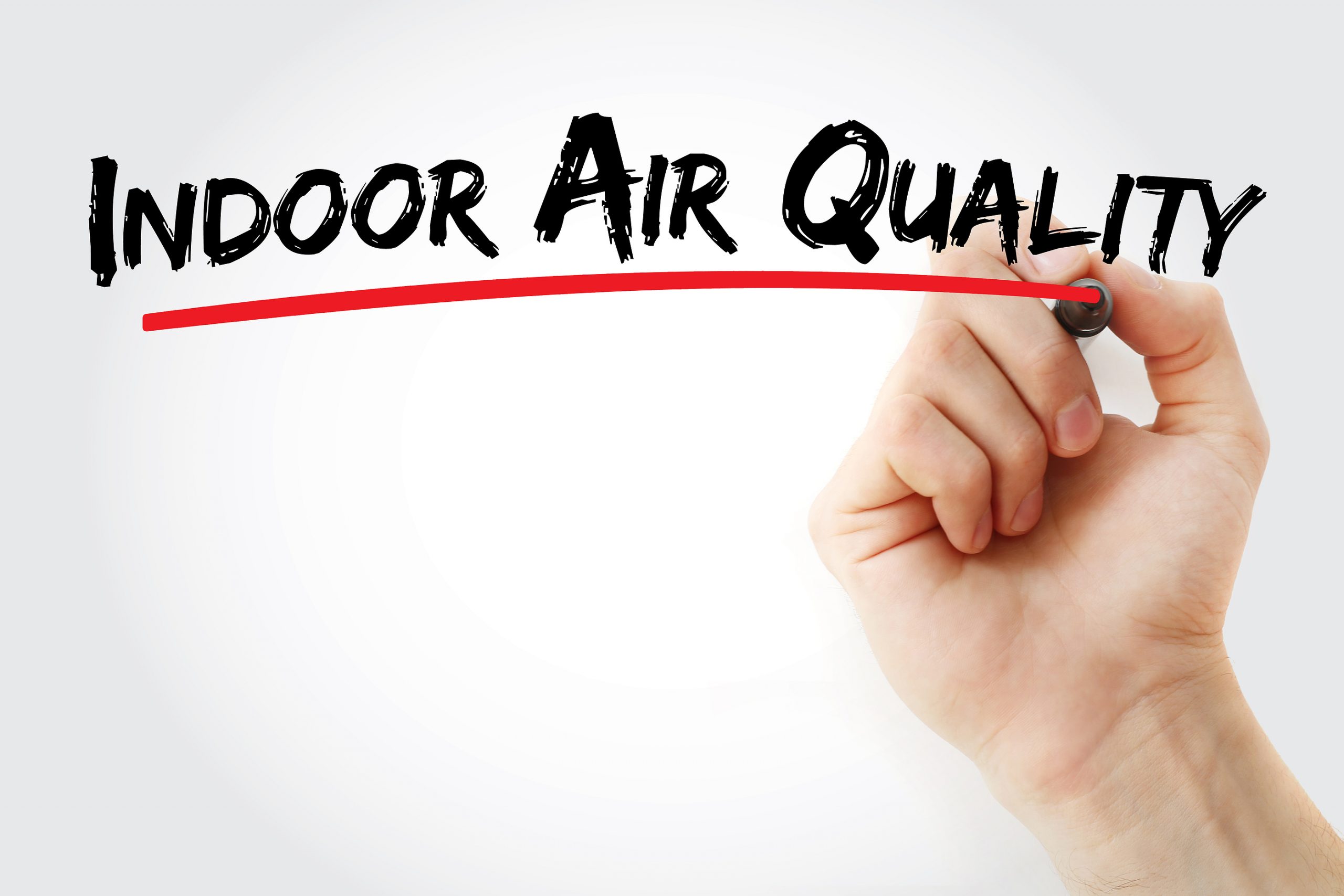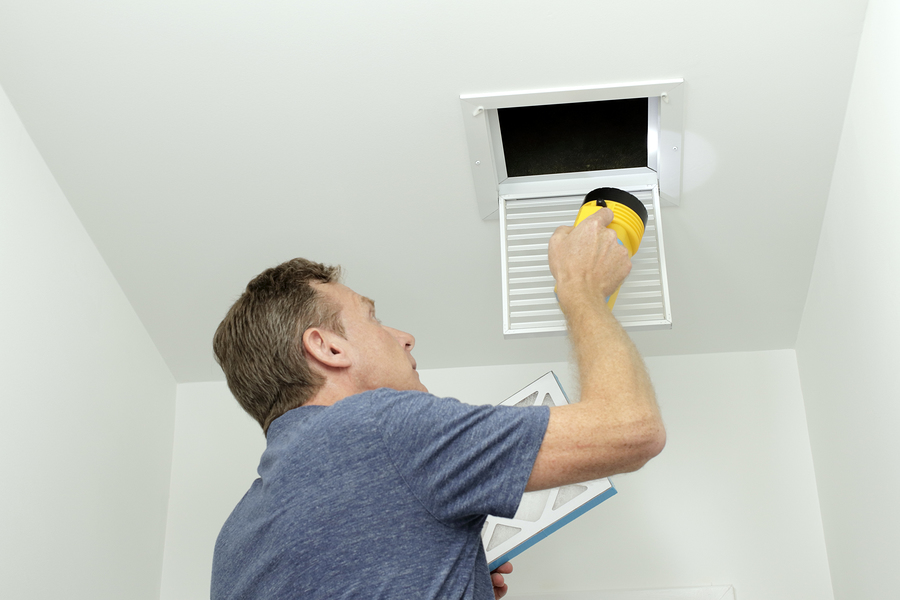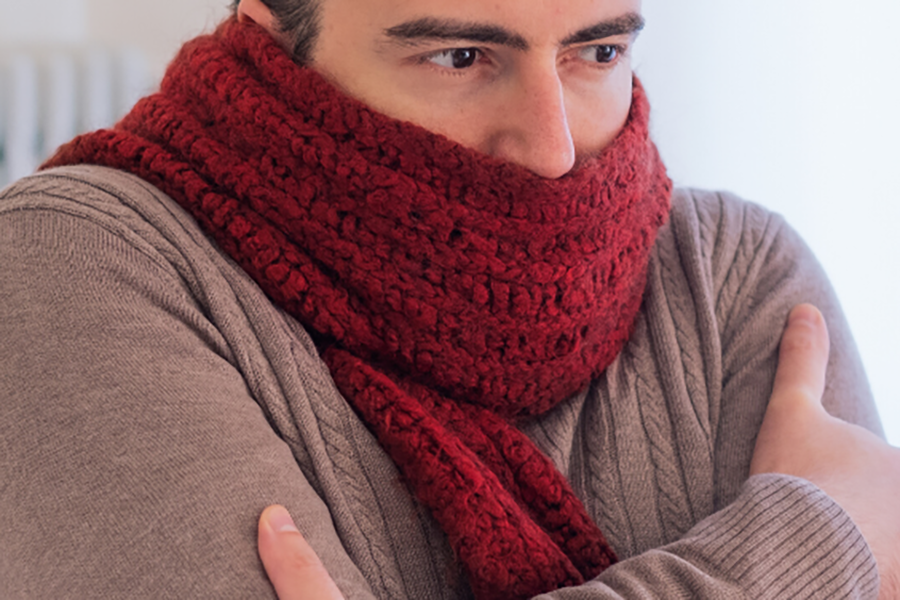As the chill of September creeps in, Minnesotans know that the frigid winter months aren’t far behind. And though, with the cold months, we must wave goodbye to summer’s outdoor-hobbies, mechanics and DIYer’s still have the option to enjoy their pastimes comfortably in their garage. If the garage is heated, that is. This month, we’re taking a break from talking about HVAC maintenance, and helping with tips and recommendations to keep your garage warm this winter. There are two major components of making your garage a livable temperature: insulation and an efficient heating system. Seal and Insulate Before we even think about heating the garage, it needs to be properly insulated. If it’s not insulated, any heat that gets pumped into the garage will quickly diffuse through the walls, windows, and the garage door. Walls: Most garage walls are just studs that are covered on the outside with sheathing and siding. That means they aren’t insulated like the rest of your home. This makes heating and cooling the area much harder. Luckily, insulating garage walls is a fairly easy task: layer batt insulation between the studs and install plywood sheets or drywall panels to cover them.Windows: If your garage has windows, they’re more than likely letting in some kind of draft. To mitigate this, you can air seal your windows by applying weather stripping and caulk. (Check out our other blog about how to air seal your home for more details on how to do this.) You’ll also want to insulate your windows using a window insulation kit. Simply apply the film to your window and use a hair dryer to shrink it until it fits snugly to the glass. The film will help keep the warm air in and the cold air out.Floors: There’s nothing worse than a freezing-cold garage floor. If you’re planning on working low to the ground (looking at you, mechanics), you’ll definitely want to invest in some kind of garage floor-covering. Even if you’re not planning on being close to the ground, covering your garage floor will instantly make the room feel warmer. Outdoor rugs work well for this, or you could install interlocking rubber mats for extra padding. Door: You’d be hard-pressed to keep your garage warm without fixing up the garage door. Not only are standard garage doors thin and uninsulated, but they also have many gaps on the sides where the door meets the frame. Apply weather stripping to the garage door frame to seal up any gaps. As for insulation, invest in a garage door insulation kit. These kits make it easy to install pre-cut panels of insulation. Choose Your Heat Source Now that we’ve covered how to keep warm air contained in your garage, we can finally talk about choosing a heating system. There are a multitude of products available that will keep your garage warm, but finding the heating system that’s right for you will depend on your budget, the size of your garage, and the garage’s purpose. Portable Space Heaters Space heaters are small, portable heaters that generate warmth via electricity, propane, kerosene, or natural gas. Space heaters such as baseboard heaters and ceiling-mounted space heaters are great options for keeping your garage warm. There are some downsides of space heaters: first of all, they can pose a fire hazard if handled incorrectly. Second, if they operate off of electricity, they can run up your heating bill quite a bit. So you’ll have to be mindful of when you turn them on and how long you run them. Hot Dawg® Garage Heater If you’re looking for a heating solution with versatile installation options, the ceiling-mounted Hot Dawg® Garage Heater frees...
Read MoreAs temperatures rise, your first instinct may be to head for the thermostat. But overworking your air conditioner can be hard on your wallet. Additionally, it causes more wear and tear on your A/C unit, which may have you paying for A/C repair or replacement sooner than you’d like. Did you know that there are alternative ways to cool your home? Yep, that’s right. There are tons of cooling methods you can use, either without running your air conditioner, or in tandem with efficient A/C use. So, instead of overworking your A/C (and hiking up your energy bill in the process), consider some cost-efficient alternatives. Here are 11 home-cooling hacks that can keep you and your house cool this summer. Test drive a couple of these tips this summer to keep you and your family cool. Of course, no matter what home-cooling “hacks” you try, A/C use will be inevitable on some days. Check out our tips to make sure you’re using your A/C efficiently this summer. Install ceiling fans and run them counterclockwise. Let’s start with some classic advice: If you haven’t already, you need to install ceiling fans. Running them counterclockwise in the summer will help push cool air down instead of pulling it up. (Set them clockwise in the winter for the opposite effect.)Run bathroom and kitchen exhaust fans. Hot air tends to linger after you cook dinner or shower. Turn on the exhaust fans to suck all that hot air out of your home.Close your curtains during the day. This will block out some sunlight and reduce the heat that comes in through the windows. (Take down any dark, synthetic drapes you may have. Opt for cotton or sheer curtains instead for filtered light).Change out your light bulbs. Most people don’t realize that their incandescent bulbs emit heat. According to the Center for Sustainable Energy, incandescent bulbs waste 90% of the energy they use, which is given off as heat. Switch them out for fluorescent or LED bulbs, instead. Not only are these bulbs cooler, but they’re also more efficient. Use the ice “hack” on your portable fan. Fill a bowl with ice and place it on a table or other surface that’s level with your portable fan. Then, turn on the fan for a blast of icy breeze with a cooling mist. Use this method for instant relief from muggy summer days.Invest in a Chillow or DIY your own. What’s cooler than the other side of your pillowcase? How about a Chillow? A Chillow is a cooling pad that you can place over your pillow. It works wonders for hot sleepers. You can also DIY your own cooling pillow by filling up a small pillowcase with rice and sewing it shut. Store the rice pillow in the freezer during the day, and at night, sleep on it like a regular pillow. The rice will keep its cold temperature for a while, making for a cool night’s rest.Apply heat-reducing film to your windows. Block out anywhere from 70-90% of the heat coming in through your windows with reflective film. Not only do window films cut down on excessive heat, but they also stop some of the cold air that seeps in through windows in the winter. Install duct boosters. If you want to draw more cool air into certain rooms, give your air ducts a boost! A duct booster fan is a fan that fits inside an air duct and can be turned on to increase the airflow in a room. Try this out if you have certain rooms that just won’t cool down. Cross ventilate your home. Most people know to open...
Read MoreYour home’s indoor air plays an important role in the health of you and your family. Poor indoor air quality can contribute to health problems like asthma and allergies, and the effects of toxins like radon and carbon monoxide can be even more serious. Testing your indoor air quality is an important part of ensuring your home’s air is safe to breathe. Here’s what you need to know about indoor air pollutants, signs of poor air quality, how to maintain good indoor air quality, and how to test the air in your home. What Health Hazards Are Commonly Found in Indoor Air? Your home’s indoor air can be affected by pollutants coming from a number of sources — from the materials used in construction to carpet and furniture fabrics to mold and mildew due to poor ventilation. Some of the most common pollutants found in homes are: Mold and mildew: typically grow on surfaces due to ventilation issues or high indoor humidityRadon: an odorless, colorless gas and the second leading cause of lung cancer after smokingCarbon monoxide: another odorless, colorless gas that can be deadly if left uncheckedVolatile organic compounds (VOCs): emitted by building materials and household products; can exacerbate existing respiratory conditionsParticulate matter, including dust mites and other allergens: can cause shortness of breath, chest congestion, or wheezing, and are linked to increased risk of heart-related health issues When Should I Test My Air? Signs of Poor Indoor Air Quality For the most part, the Environmental Protection Agency (EPA) doesn’t recommend general indoor air quality testing, and there is no single test that can measure every aspect of the air quality in your home. However, there are specific tests for some pollutants, so it can be helpful to know the signs and symptoms to watch for to determine what tests you will need. Some indoor air pollutants cause obvious symptoms: for instance, nausea, confusion, dizziness, and headaches are often signs of dangerous levels of carbon monoxide in the home. And mold and mildew are typically easy to spot. Other pollutants may require a bit more observation to narrow down. Notice, for instance, if you start coughing when you enter a certain room or have health symptoms that disappear when you’re at the office or on vacation. Symptoms of allergens or other particulate matter in your air can include: CoughingWheezingShortness of breathScratchy throatWatery eyes Radon, one of the most dangerous substances that can affect your indoor air, causes no immediate symptoms at all — but long-term exposure can lead to serious health problems. This is why radon testing is often performed when a home is sold. If you bought your home many years ago, or a radon test wasn’t done when you bought it, it may be a good idea to have one done now. How To Test Your Indoor Air Quality Evaluate any symptoms you are experiencing, along with input from your doctor. Once you have things narrowed down, you can have your home tested for the pollutants you suspect may be an issue. Radon test kits can be purchased online or in many home improvement stores, or you can hire a professional to do it for you. To test for other pollutants, you’ll need to hire someone. To find reputable indoor air quality specialists, look to an organization like the Indoor Air Quality Association for a list of members. Or ask a local real estate agent or home inspector for a recommendation — both should have connections to air quality specialists in your area who can help with both testing and mitigation of pollutants. Ways To Improve Indoor Air Quality Beyond testing your indoor air quality, there are a few things you can do...
Read MoreHeating season can be tough on your HVAC system. If you don’t keep your heating and cooling system well-maintained, once you switch the heat on for the winter the wear and tear from previous years will quickly make itself known in the form of breakdowns and inefficient heating. Luckily, you can easily get ahead of common winter heating problems with some preventive HVAC maintenance. A little maintenance now can help extend the life of your heating and cooling system and save you money while ensuring a comfortable home all winter long. Make sure your heating system is ready to keep you warm this winter with these maintenance tips. 1. Replace the Air Filter A dirty air filter will make your furnace run harder than it should, driving up your energy bills and potentially damaging your HVAC system. It’s best to start the heating season with a clean filter, then change it regularly. Make sure to check your filter every month. Depending on the type of air filter you have, you may not need to replace it every time, but you should still be in the habit of checking it monthly. 2. Clean the Air Vents When you vacuum your home, make it a habit to vacuum out your air vents as well. This can help prevent blockages and maintain good indoor air quality. If you notice buildup in your vents that vacuuming doesn’t seem to take care of, it may be time to schedule a professional air duct cleaning. At Titan, we recommend cleaning your air ducts at least once every 2-3 years to allow your HVAC system to operate at its highest level of efficiency. 3. Check Your Thermostat Replace your thermostat’s batteries so it is ready to get you through the heating season. (While you’re at it, it’s a good idea to replace the batteries in your smoke and carbon monoxide detectors as well, especially if you haven’t done so in a while). And if you don’t yet have a programmable thermostat, now is the time to upgrade. Additionally, check to ensure your thermostat is programmed to meet your needs this winter. To save energy, set your thermostat to a cooler temperature at night and while you’re at work and a warmer temperature during the times you are home and awake. 4. Have Worn Parts Replaced It’s easier to fix potential problems now than when they become heating emergencies later this winter. To ensure your HVAC system is prepared to run smoothly all season, replace worn parts before they break. Ideally, you should have your heating system inspected each fall, where an HVAC professional will check for signs of wear or malfunction. This way you can have any problem parts replaced before they break or cause damage to other components of your system. 5. Cover Your Outdoor A/C Unit Your A/C unit may not be the first thing on your mind as temperatures get colder, but now is the time to ensure it is protected from damage over the winter. If your HVAC system has an outdoor A/C unit, be sure to cover it for the winter. This will protect it from ice, snow, and debris buildup and help prevent the need for extensive repairs before you turn your A/C on next summer. 6. Add Insulation While insulation may not seem to directly affect the performance of your heating and cooling system, it does play a key role in the overall energy efficiency of your home. If your home is lacking in insulation, your furnace will need to work harder to keep your home warm, and you’ll notice the effects of this in your heating bill. Check to ensure your attic has enough insulation, and add more as...
Read MoreThe filter in your heating and cooling system plays an important role in maintaining good indoor air quality in your home. It works to filter dust, pollen, and other small particles out of the air, creating cleaner, healthier air for you and your family to breathe. It also helps protect your HVAC system by keeping it free of larger particles that could damage it. This is why it is so important to make sure you are using the right type of air filter for your system, budget, and air quality needs, and that you make filter replacement part of your routine HVAC maintenance. There are 7 commonly used types of HVAC filters available for residential heating and cooling systems, but before we get to that, let’s talk a little bit about how those filters are rated. Rating the Different HVAC Filter Options: MERV Rating MERV stands for minimum efficiency reporting value. The MERV rating is a consumer standard developed by the American Society of Heating, Refrigerating, and Air Conditioning Engineers (ASHRAE). MERV measures a filter’s ability to capture particles as small as 0.3 microns to 10 microns. Ratings range from 1 to 20, with the ideal range for most homes between 8 and 13. The higher the MERV rating, the more effective a filter is. However, be aware that MERV ratings at the higher end of the spectrum can make it more difficult for your HVAC system to pull in air, forcing it to work harder (and potentially shortening its lifespan). Fiberglass Air Filters Fiberglass filters are made with strands of fiberglass spun together. They are the most commonly used and least expensive option on the market. They are highly effective at keeping large particles of dirt and debris out of your heating system. However, they are less effective at filtering dust and other small particles out of your air. Because of this, these filters aren’t a good option for those with allergies or respiratory problems. Fiberglass filters typically have a MERV rating of 4. Pleated Air Filters Pleated air filters are made of either polyester or cotton fabric that is folded to create pleats. They are slightly more expensive than fiberglass filters, but are more effective at filtering smaller particles like dust, pollen, mold spores, and pet dander. The increased surface area created by the fabric pleats allow for better filtration: The more pleats a filter has, the better it filters particles out of your home’s air. This type of filter can also help reduce the noise your HVAC fan makes. Pleated filters are available in either disposable or reusable options, and can be recycled as well. MERV ratings of pleated filters can range from 5 to 13. HEPA Filters High-efficiency particulate air filters, or HEPA filters, are the best option for people with allergies and respiratory issues. This type of filter does an excellent job of cleaning your home’s air. In fact, they are effective at screening out up to 99.97% of contaminants, including dust, pollen, mold, pet dander, viruses, bacteria, cigarette smoke, and other irritants. While HEPA filters are a heftier investment up front, they are longer lasting than other air filters, making them more cost effective in the long run. HEPA filters are usually rated 11 or higher on the MERV scale. Washable Air Filters Washable air filters can be cleaned and reused as needed, rather than thrown out and replaced. They cost more initially, but save you money over the long term because you don’t have to replace them. If you use washable filters, it is crucial to maintain them properly. For instance, be sure to let them dry completely before putting them back into your HVAC system, as even a small amount of moisture left...
Read MoreManaging the humidity level in your home is an under-discussed facet of maintaining good indoor air quality. When the humidity in your home is either too high or too low, it can degrade the quality of your air, leading to damage to your home and your belongings as well as negative health effects for you and your family. Humidity control through the use of a humidifier or dehumidifier helps balance your home’s humidity levels for better indoor air quality. Ideal Indoor Humidity Levels Humidity is the amount of water vapor in the air. Relative humidity is the percentage of water vapor in the air at a given temperature compared with the maximum amount of water vapor the air can hold at that temperature. When we talk about indoor humidity levels, we are using a measure of relative humidity. Ideally, humidity levels in your home should be between 35 and 60%. This is the sweet spot for comfort level as well as for healthy indoor air quality. Outside of this range, your home will feel less comfortable and you will begin to notice the effects of poor indoor air quality on your health. How Does Humidity Affect Air Quality? Humidity levels affect how warm or cool your home feels. In the winter, when the air dries out due to drier outdoor air and running your heating system, low humidity can make your home feel colder, even when your thermostat is set at an otherwise comfortable temperature. The higher the moisture content in the air, the warmer your home will feel. Additionally, bacteria and viruses that cause respiratory illnesses thrive in environments with significantly high or low humidity levels. High humidity can also increase the prevalence of mold, dust mites, and other allergens in your home. These things can have a significant impact on your home’s air quality and your family’s health and wellbeing. Health Effects of Low and High Humidity Both extremely low and extremely high indoor humidity can negatively affect your health. Low Humidity When your home’s humidity levels are balanced, moisture in the air weighs down particles of bacteria, viruses, and other pollutants, causing them to fall. But when humidity in your home is low, the drier air allows these particles to move more freely throughout your space. The less moisture there is in the air, the more freely the particles can circulate. Low humidity can cause: Dry skin, rashes, and infectionsChapped lipsItchy eyes and noseDry sinuses and throatDry coughNosebleedsWorsened asthma symptomsand more In addition, dry mucous membranes in the sinuses can make it more difficult for your body to fight off the germs that cause colds, flu, and other respiratory illnesses. Improving your indoor air quality by balancing your home’s humidity levels can help control the spread of infectious diseases. High Humidity On the other end of the spectrum, high indoor humidity can also cause negative health issues, such as: Growth of mold and mildewIncreased prevalence of dust mitesSinus stuffinessDifficulty breathingHeadachesEye irritationSkin irritationAggravated asthma symptoms In addition, high humidity can make warm temperatures feel even warmer, leading to heat-related illnesses like heat rash, heat exhaustion, or even heat stroke. Benefits of Home Humidity Control Luckily, the majority of adverse health effects caused by extreme levels of humidity can be minimized through humidity control. When your home’s humidity levels are kept within the ideal range, you will experience: Healthier skinA more comfortable sleeping environmentReduction in dry, scratchy throat, eyes, and sinusesImproved asthma symptomsReduced risk of airborne illness transmissionAnd many more health and wellness benefits Controlling the humidity in your home is as simple as installing a humidifier or dehumidifier, depending on your needs. At Titan, we install Aprilaire whole-house humidifiers and Ultra-Aire whole-house or free-standing dehumidifiers. Installing a whole-house humidifier or dehumidifier...
Read MoreSpring is the time we all think of freshening up our homes, from deep cleaning to tackling our list of home repairs. If your home needs updating, but you’re working with a limited budget, we have a few ideas for you. Here are 10 ways to update your home without breaking the bank this spring. 1. Insulate and Seal Up Leaks Proper insulation helps keep your home warmer in winter and cooler in summer. If your HVAC system seems to run all the time, additional insulation will help. Seal up drafty windows or doors as well, using weatherstripping or caulk to keep conditioned air from escaping. 2. Add or Replace Window Treatments Create cooling shade for the summer by adding blinds, curtains, or even indoor shutters to your windows. Or replace older window treatments with new ones for a clean, fresh look. This small upgrade will have a big effect on the look and feel of your home. 3. Update Kitchen Cabinets Spruce up kitchen cabinets with a fresh coat of paint. Go even further by replacing cabinet pulls and knobs with new hardware. These simple changes are quick and inexpensive, and will make your kitchen look brand new without having to do a complete remodel. 4. Install a Dishwasher Consider installing a dishwasher (or replacing an old one) to both conserve water and up your game in the kitchen. If you spend a lot of time cooking and feeding your family, an energy-efficient dishwasher will not only save you money on your water bill, but save you time as well. Take the time you used to spend washing dishes and get outside to enjoy the summer! 5. Add a Water Filtration System If you are someone who ends up buying a lot of bottled water because you don’t like the taste of your tap water, a reverse osmosis system will be a valuable update for your home. A good quality under-sink system will cost between $150-$500, and will save you money in the long run. 6. Update Your Lighting Brighten up your home and save money by replacing old bulbs with new energy-efficient ones. Clean or replace lamp shades and light fixtures for a refreshed look and brighter lighting. Or consider installing dimmer switches to create warmth in rooms where ceiling lights are too harsh. 7. Put Down Fresh Caulk Get rid of old, cracked caulk around sinks, bathtubs, and shower stalls, and lay down a fresh bead of caulk. Caulk is cheap, and this simple fix will prevent mildew and leave your bathroom looking clean and tidy. 8. Add a Bathroom Vent Fan Speaking of the bathroom, if yours doesn’t already have a vent fan, now is a great time to add one. Unvented bathrooms accumulate moisture, resulting in peeling paint, warped cabinetry, and even mold and mildew growth over time. Save yourself time and money on future repairs by installing a vent fan. 9. Install Ceiling Fans Believe it or not, ceiling fans can provide substantial energy savings year round. They circulate warm air in winter and create cool breezes in summer, reducing the strain on your heating and cooling systems. Consider installing ceiling fans in your living areas and bedrooms to improve comfort while saving your HVAC system some wear and tear. 10. Switch to a Programmable Thermostat Here’s another idea that will save you money and give your HVAC system a break, while also upgrading your lifestyle. A programmable thermostat can be set to automatically change the indoor temperature while you are sleeping or away from home. Some higher-tech models even allow you to adjust your home’s temperature while you’re gone by using a smartphone app. These 10 things will get you off to a great...
Read More[vc_row][vc_column][qodef_custom_font font_family="Archivo" font_size="60px" line_height="70px" font_weight="700" text_align="left" content_custom_font="6 Reasons to Invest in Professional Duct Cleaning" color="#000000"][vc_empty_space height="20px"][vc_column_text] The buildup of dust, mold, and other allergens in your home’s ductwork can have an effect on your family’s health and the health of your heating and cooling systems. Removing contaminants from your HVAC system will greatly reduce these effects and lead to cleaner air in your home, among other benefits. Here are our top 6 reasons to invest in regular professional duct cleaning. 1 - Allergies Bacteria, mold, fungi, and other allergens can grow in the tight spaces of your air ducts. Pet fur, dander, dust, and dust mites can also build up in your system. Since the air in your home is circulated through your air ducts several times a day, this buildup can aggravate allergy symptoms. Regular duct cleaning can provide significant relief to family members with allergies. 2 - Mold Since most HVAC systems are located in the basement of the home where moisture levels are highest, it’s likely for mold to be present in your air ducts. The likelihood is even higher if your basement has been damp, flooded, or otherwise water damaged in the past. 3 - Dust When you dust your home, but find that it’s dusty again within a few days, that could be an indication that your ducts need to be cleaned. Regular professional duct cleaning will result in your home staying dust-free for longer periods of time. 4 - Odors Dust in your air ducts collects the smells of food, smoke, cleaning products, pets, and more. As your HVAC system circulates the air through your home throughout the day, all of your home’s odors will circulate as well. Clean duct work means fresher-smelling air. 5 - Pest Infestation There are many reasons to avoid a pest infestation in your ductwork, not the least of which being that insects and rodents leave droppings and other materials that harm the air quality in your home. Pests love dirty ductwork - keeping your system clean will discourage them from gathering there. 6 - Efficiency The buildup of dirt and debris in your ductwork can hinder your HVAC system’s airflow, causing it to work harder to keep your home at a comfortable temperature. This excess strain can lead to higher energy bills, as well as more frequent repairs and a shorter lifespan for your system. Having your ductwork regularly inspected and serviced will result in cleaner air circulating through your home and a more efficient, longer-lasting HVAC system. Find more information on Titan Heating & Cooling air duct cleaning services here, and give us a call to schedule your next cleaning - 651.714.8931. [/vc_column_text][/vc_column][/vc_row]...
Read More[vc_row][vc_column][qodef_custom_font font_family="Archivo" font_size="60px" line_height="70px" font_weight="700" text_align="left" content_custom_font="Telltale Signs it’s Time to Say Goodbye to your Furnace" color="#000000"][vc_column_text]As the new year begins, it’s a great time to take stock of your home’s heating and cooling systems to determine if an upgrade could be on the horizon for you. While installing a new furnace can be pricy and inconvenient, the same can be said for the continued maintenance of an older heating system. Let’s take a look at a few signs that it might be time to say goodbye to your furnace. 1 – Age The average lifespan of a furnace is 15-20 years, and it will become less efficient the older it gets. Even with regular maintenance, the stress of everyday wear and tear will eventually lead to a failing system. If your furnace is nearing 20 years old, it may soon be time to upgrade to a newer, more efficient model. 2 – It needs frequent repairs Heating systems require more frequent repairs as they age. In fact, most repairs happen during the last 2 years of the life of a furnace. If you find yourself calling for repairs more than a couple times per year, it could mean your furnace is getting worn out and it’s time for a new one. 3 – Strange noises If you hear rattling, popping, or banging noises when your furnace turns on, it might be nearing its end. Also, if you notice the blower turning on and off frequently or blowing cool air, that could also be a sign your furnace is getting worn out and needs to be replaced. 4 – Lack of heat or inconsistent heat Lack of heat may be the most obvious sign that your furnace is going out. As it nears the end of its life, your furnace will no longer be able to keep up with the demand for heat, and you may find yourself having to adjust the thermostat often in order to be comfortable. Another thing to watch for is inconsistent heat. If the rooms in your home are inconsistently too cool or too warm, that is usually a sign your furnace is no longer able to distribute the heat properly throughout your home. 5 – Higher heat bills A steady rise in heating costs over the years can be an indicator that your furnace is becoming less efficient. If you’re keeping up with maintenance and repairs, and your bills are still increasing, it may be time to invest in a new furnace. And while you’re at it, installing a programmable thermostat along with your new furnace can help save you even more money! These are just a few things you may notice as your furnace ages. If your furnace is showing signs of decline, we can help determine whether it needs repairs or a complete replacement. Though replacing your furnace may not be the way you wanted to spend your money this year, a newer, more efficient system will not only offer the immediate benefit of increased comfort, it will also save you money in the long run. Ready to make the switch to a new furnace? Give Titan Heating & Cooling a call today at 651-714-8931 or email Service@TitansHVAC.com! We offer specials on new furnaces including 0% financing![/vc_column_text][/vc_column][/vc_row]...
Read More- 1
- 2

